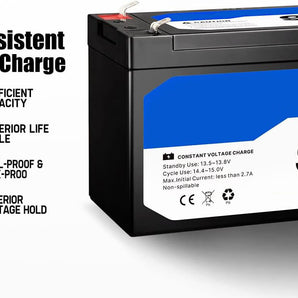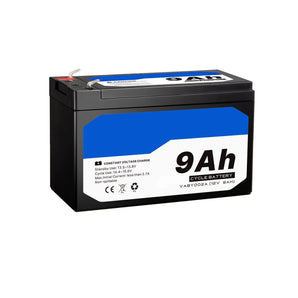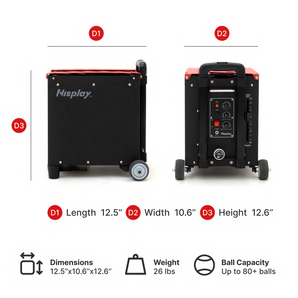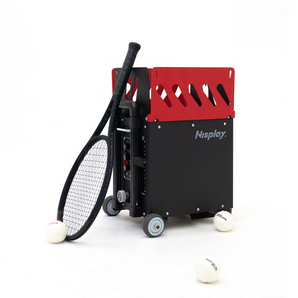Tennis is an age-old sport, enjoyed by millions around the world. With advancements in technology, training for this sport has seen a significant evolution. One such marvel is the tennis ball launcher machine. These machines, popularly known as ball machines, serve as excellent training companions. But have you ever wondered how they seamlessly serve ball after ball? Let's delve into the intricacies of its mechanism.
The Core Components of a Tennis Ball Launcher Machine
- Ball Container: The primary reservoir that stores all the balls. Depending on the model, it can hold between 50 to 300 balls.
- Throwing Wheels: Often two, these wheels are designed to spin and launch the ball out. The ball is pinched between these wheels, causing it to be ejected at high speeds.
- Motor: Drives the throwing wheels and determines the speed of the ball. Modern machines allow speed adjustment to simulate different types of shots.
- Oscillation System: This system moves the ejection point from side to side, ensuring balls are launched in different directions, simulating an actual opponent's varied shots.
- Control Panel: This is where the user can determine the speed, direction, and spin of the ball. Advanced models offer programmable drills and shot patterns.
The Mechanics Behind the Machine
Understanding the mechanism of the tennis ball launcher is essential for anyone looking to maximize their training sessions. Here's how the magic happens:
- Loading the Machine: The user starts by filling the ball container with tennis balls. Once turned on, the machine will feed balls into the ejection system.
- Setting the Parameters: Using the control panel, the user sets the desired speed, direction, spin, and frequency of the shots. Advanced machines might even allow players to simulate match scenarios.
- The Launch: The motor activates the throwing wheels, which start spinning. A ball drops in between these wheels, and due to the rotational force, it's ejected out with the desired spin and speed.
- Oscillation in Action: As the balls are being launched, the oscillation system ensures they are thrown in various directions. This unpredictability imitates real-match situations, ensuring a comprehensive training experience.
Benefits of Using a Tennis Ball Launcher Machine
Training with a tennis ball machine isn't just about the convenience of not needing a partner. There are myriad benefits:
- Consistency: Ball machines deliver consistent shots, allowing players to work on specific strokes repeatedly.
- Versatility: From top spins to lobs to drop shots, players can practice various shots with precision.
- Endurance Training: Continuous play without breaks can help improve stamina and on-court endurance.
-
Flexibility: Whether you're a beginner or a pro, ball machines can be adjusted to suit the skill level, ensuring tailored training sessions.

Maintenance and Care
Like all machines, a tennis ball launcher needs regular maintenance for optimal performance:
- Regular Cleaning: Ensure that the ball container and ejection system are clean. Dirty or wet balls can affect the machine's performance.
- Battery Check: For portable machines running on batteries, ensure they're fully charged before each session.
- Wheel Inspection: Check the throwing wheels for wear and tear. Replace them if necessary to maintain consistent ball speed and direction.
- Storage: Always store the machine in a dry place. Prolonged exposure to moisture can damage its components.
In conclusion, the tennis ball launcher machine is an incredible piece of equipment that has revolutionized tennis training. By understanding its working, players can better utilize its features and maintain it for longevity. For those serious about their tennis game, it's an investment that delivers unparalleled training opportunities.









